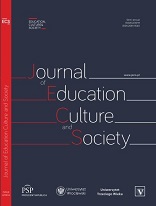THE LENS, FRAMES AND PATTERNS OF UKRAINIANS: HOW PERCEPTION OF THREAT AND RISK DETERMINES BEHAVIOUR IN THE COVID-19 SITUATION
THE LENS, FRAMES AND PATTERNS OF UKRAINIANS: HOW PERCEPTION OF THREAT AND RISK DETERMINES BEHAVIOUR IN THE COVID-19 SITUATION
Author(s): Maryna Klimanska, Larysa Klymanska, Inna HaletskaSubject(s): Sociology, Crowd Psychology: Mass phenomena and political interactions, Environmental interactions
Published by: Fundacja Pro Scientia Publica
Keywords: pandemic;Covid-19;ideas of risk;virtual risk;risk as a potential threat;uncertain risk;uncertain danger;risk as a real threat;qualitative research;preventive health behaviour
Summary/Abstract: Aim/Thesis. Identification and construction of the typology of individual ideas about the perception of the risk posed by COVID-19 and potential impact of individual ideas on behavioural human intentions. Risk perception is viewed as a social construct.Concept/Methods. The subject matter of analysis consists of 91 transcripts of semi-structured interviews subjected to thematic analysis (Braun & Clarke, 2006). On the basis of categories identified through thematic analysis a frame was created, through which an individual perceives the threat posed by COVID-19, while configuration of different subcategories shaped up four types of perception, used for data categorization. Results and conclusion. Analysis of the results enabled to outline the very structure of frame for the assessment of the risk posed by COVID-19, it including seven categories, as well as to outline several typical frames in risk perception, which are traced in the informants’ conscience and are manifested in the intentions of behavioural responses to threat, viz.: potential danger (virtual risk); risk as a potential threat; uncertain risk; risk as a real threat. Research restrictions. The restrictions in the research done include impossibility of regulating the selection of informants, since interviews were conducted in the quarantine conditions, therefore the choice of informants was made within the reach. Practical application. Clarification of risk perception in the conditions of pandemic may enable health care representatives to more efficiently communicate with the public. Originality/Cognitive value. The research was done in the quarantine period, thus it reflects real worries and opinions of informants under the threat of COVID-19. Implementation of the research using qualitative methods ensured focusing on subjective peculiarities of risk perception. Conclusions: Typology of ideas, frames about risk in the conditions of the COVID-19 pandemic requires further clarifications and validation within a qualitative research.
Journal: The Journal of Education, Culture, and Society
- Issue Year: 11/2020
- Issue No: 2
- Page Range: 444-460
- Page Count: 17
- Language: English

